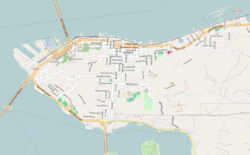
Ellis Fuller Lawrence was an American architect who worked primarily in the U.S. state of Oregon. In 1914, he became the co-founder and first dean of the University of Oregon's School of Architecture and Allied Arts, a position he held until his death.

The Bagdad Theatre is a movie theater in the Hawthorne District of Portland, Oregon, United States. It originally opened in 1927 and was the site of the gala premiere of One Flew Over the Cuckoo's Nest in 1975, and of My Own Private Idaho in 1991.

The Failing Office Building is a building in downtown Portland, Oregon, United States that was listed on the National Register of Historic Places on October 31, 2007. The building was built during the rapid growth in Portland's business district after the Lewis and Clark Centennial Exposition in 1905. It was built with six stories in 1907, with a six-story addition in 1913. It features a reinforced steel-frame structure with facades of yellow brick and glazed terra cotta.

Lee Arden Thomas (1886–1953) was an architect in Bend and Portland, Oregon, United States. He graduated in 1907 from Oregon State University. He completed many projects in Bend, often partnering with local architect Hugh Thompson. His work in that area includes the planning for Bend Amateur Athletic Club Gymnasium (1917–1918), Redmond Union High School, and the Washington School in Corvallis.
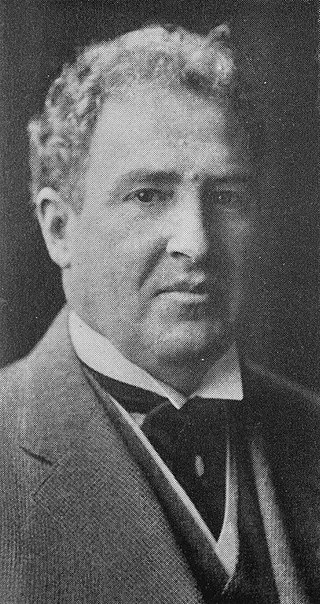
John Virginius Bennes was an American architect who designed numerous buildings throughout the state of Oregon, particularly in Baker City and Portland. In Baker City he did an extensive redesign of the Geiser Grand Hotel, designed several homes, and a now-demolished Elks building. He moved to Portland in 1907 and continued practicing there until 1942.

The United States Post Office in Astoria, Oregon, United States, is a historic building constructed in 1933. It is a two-story building on a raised basement. Its exterior dimensions are 79 by 137 feet. Its 11-bay front facade is divided by flat fluted pilasters with Corinthian capitals supporting a full entablature, with a balustraded parapet above, and a red-tiled hipped roof rising behind that. Its foundations had to be blasted by dynamite.
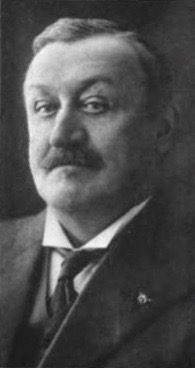
Emil Schacht was a prominent architect in Portland, Oregon. Schacht's work was prolific from the 1890s until World War I and he produced commercial buildings including factories and warehouses as well as residential projects, hotels and theatres. He is known for his craftsman architecture style homes and was a founding member of the 1902 Portland Association of architects.

Morris Homans Whitehouse was an American architect whose work included the design of the Gus Solomon United States Courthouse in Portland, Oregon.

The Astoria Elks Building, also known as Astoria B.P.O.E. Lodge No. 180 Building, is an Elks building in Astoria, Oregon, that is listed on the National Register of Historic Places. It was built in 1923 and has a Beaux Arts architectural style. It was listed on the National Register in 1990.
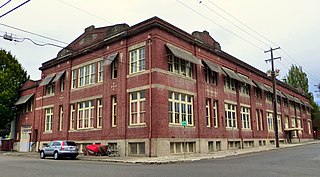
The Troy Laundry Building, located at 1025 Southeast Pine St. in Portland, Oregon, was designed by Ellis F. Lawrence in the early 1900s. It is considered a mixture of Colonial, Egyptian, and Renaissance Revival architecture. It is known for its large windows, tall brick walls, and decorative brickwork.

Povey Brothers Studio, also known as Povey Brothers Art Glass Works or Povey Bros. Glass Co., was an American producer of stained glass windows based in Portland, Oregon. The studio was active from 1888 to 1928. As the largest and best known art glass company in Oregon, it produced windows for homes, churches, and commercial buildings throughout the West. When the firm was founded in 1888, it was the only creative window firm in Portland, then a city of 42,000 residents.

The Frances Building and Echo Theater in southeast Portland in the U.S. state of Oregon is a property listed on the National Register of Historic Places. Built in 1911, it was added to the register in 1994. The Frances Building is a two-story structure that faces Southeast Hawthorne Boulevard, while the Echo Theatre is a one-story structure facing Southeast 37th Avenue. The adjoining buildings, constructed as parts of a single project, are separated by a party wall.

The John Jacob Astor Hotel, originally known as the Hotel Astoria, is a historic former hotel building located in Astoria, Oregon, United States, and listed on the National Register of Historic Places (NRHP). It is one of the tallest buildings on the Oregon Coast and is a "prominent landmark" in Astoria. Constructed in 1922–23, the hotel opened in 1924 and initially was the city's social and business hub, but soon was beset with a variety of problems, and struggled financially for years. It was renamed the John Jacob Astor Hotel in 1951, but a decline in business continued, as did other problems. The building was condemned by the city for safety violations in 1968 and sat vacant for several years until 1984, when work to renovate it and convert it for apartments began. It reopened as an apartment building in 1986, with the lowermost two floors reserved for commercial use. The building was listed on the NRHP in 1979. The world's first cable television system was set up in 1948 using an antenna on the roof of the Hotel Astoria.

The Clatsop County Courthouse is a historic courthouse in Astoria, Clatsop County, Oregon, United States.
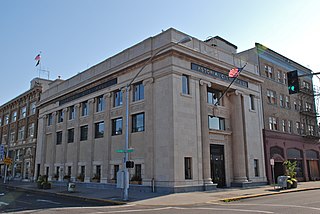
Astoria City Hall is the current city hall for the town of Astoria, Oregon, United States. Built in 1923 to house a bank, the building became the city hall in 1939, and it has remained Astoria's seat of government for more than 75 years.
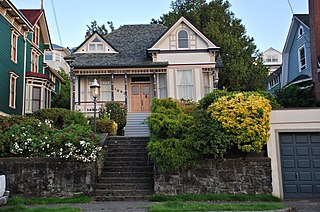
The John N. Griffin House is a historic residence located in Astoria, Oregon, United States.
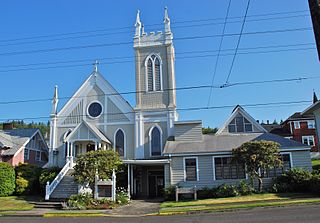
Grace Episcopal Church, also referred to as Grace Episcopal Church and Rectory in the context of historic preservation, is a church, historic church building, and accompanying parsonage, all located in Astoria, Oregon, United States.

The Park Heathman Hotel, originally known as the Heathman Hotel, is a residential building in Portland, Oregon, that serves low-income seniors and disabled persons. Owned by Harsch Investment Properties, the building was renamed Park Tower Apartments in the 1980s. It was added to the National Register of Historic Places in 2014.

